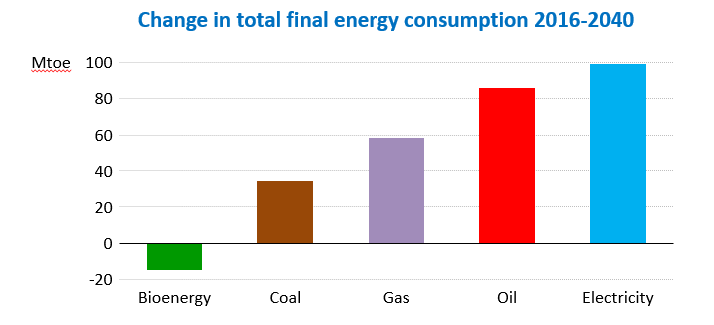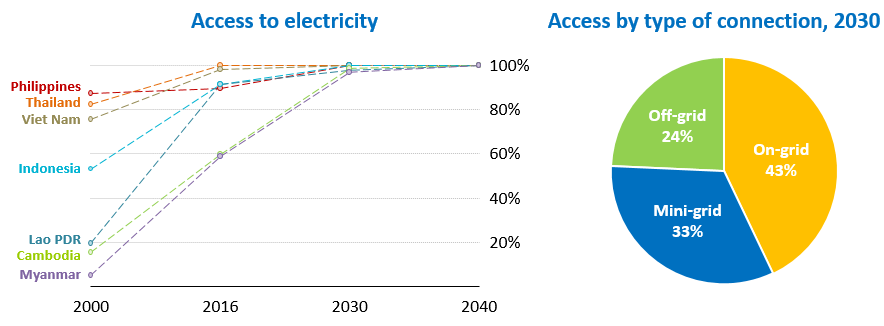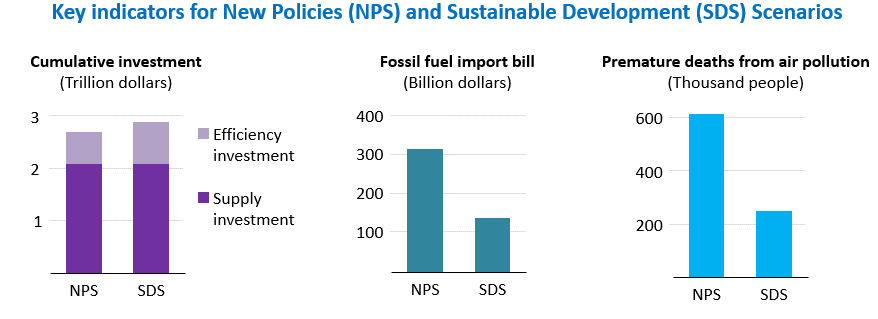By Marco Aw
The International Energy Agency (IEA) launched its Southeast Asia Energy Outlook 2017 today at the inaugural Singapore-IEA Forum held as part of SIEW 2017.

Southeast Asia is a rising energy force, said Mr Keisuke Sadamori, Director of Energy Markets and Security at IEA. Countries in this region are among the most dynamic in the global energy system.
Here are four insights we learned from the launch:
1. Southeast Asia is emerging as a major global energy player
Southeast
Asia’s energy demand will grow by almost two-thirds from now till 2040, according to the report. Together with China and India, the region will account for almost 60 percent of theglobal energy demand growth to 2040.

Fig. 1
For Southeast Asia, this growth is driven by the region’s growing numbers and increasing urbanisation. Total population is projected to increase by a fifth, with urban population growth alone contributing more than 150 million. Consequently, electricity demand will account for the largest share of the increase in energy consumption (Fig. 1).
Sectors-wise, industrial consumption will be the main demand growth engine for gas – accounting for 60 percent of incremental gas demand – while transport will be the main demand driver for oil.
2. Southeast Asia to achieve universal energy access by early 2030s
Extending connections to those without access to electricity is a top priority for policymakers in Southeast Asia. This is especially challenging in a region where varying resource distribution, distance from existing demand centres, and population density mean that there is no one-size-fits-all approach.

Fig.2
The main scenario in IEA’s report estimates that all countries in the region will achieve universal energy access by the early 2030s (Fig. 2). This will happen through deploying a wide range of fuels and technologies, as well as both centralised and decentralised solutions. The declining cost of renewables is also opening new opportunities to achieve access and reduce reliance on costly diesel generators in isolated areas.
3. Energy security is an increasing concern for the region
Decreasing domestic supply and increasing demand will push Southeast Asia’s annual net energy import bill to more than US$300 billion in 2040. This is equivalent to around 4 percent of the region’s total gross domestic product.
Apart from the mounting import bill, the region’s increasing dependence on imported energy raises significant energy security concerns that are expected to weigh significantly on policy-making leading up to 2040.
4. Policy choice a key factor for Southeast Asia’s energy future
Policy choices can help mitigate the risks of increasing energy demand and depleting fossil fuel reserves in the region. IEA’s new Sustainable Development Scenario describes an alternative pathway for the region to meet global sustainable development goals – through a slight increase in investment.

Fig. 3
This pathway is guided by the adoption of stringent efficiency standards and increased use of renewables. In turn, this will reduce reliance on imported oil and gas, and at the same time, have a profound impact on air pollution and could prevent premature death by about three times (Fig. 3).